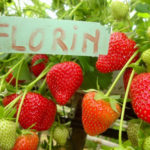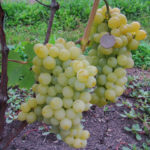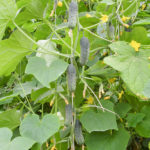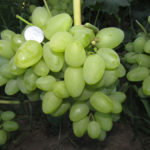Rose Mainzer Fastnacht
Mainzer Fastnacht is a German hybrid tea variety. Released in 1964. Produced by crossing the 'Sterling Silver' hybrid tea rose with an unknown seedling. One of the widespread lilac varieties. Author - Mathias Tantau.
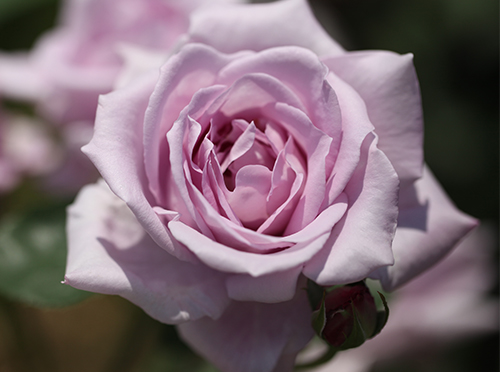
The plant is compact, erect, powerful, with a bush height of 60 - 130 cm and a width of 60 - 80 cm. The bush is well leafy. Shoots are strong, with small thorns, located on the plant in an average amount. The leaves are green, matte.
The flowers are large, 10-11 cm in diameter, and contain about 25 petals. They have a lilac color, in the sun they acquire a bluish tint, in the shade - crimson. The unopened bud is purple. The shape of roses changes during flowering from a conical bud to a goblet. Flowers bloom one by one on the shoot. The aroma of this variety is pleasant, intense, with light notes of citrus and rose oil, which lasts throughout the season.
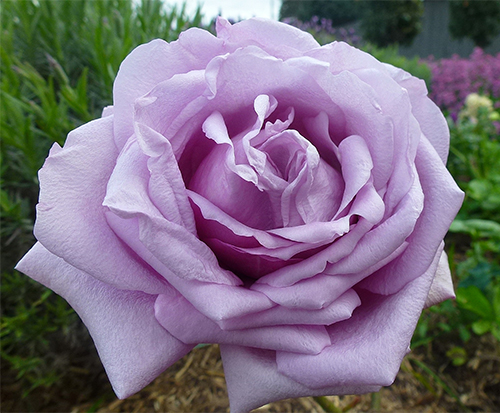
Mainzer Fastnacht is a remontant rose. Blooms profusely until autumn. It is recommended to plant it in warm sunny areas where there are no north winds. The plant also feels good in partial shade. Prefers moist and well-drained soils, with an acid-base reaction (pH 5.6 - 7.3).
The bushes must be covered for the winter, after cutting off the shoots (up to 30 cm above the ground) and loosening the topsoil to provide air access to the roots. In the spring, you need to carry out sanitary pruning, top dressing and preventive spraying.
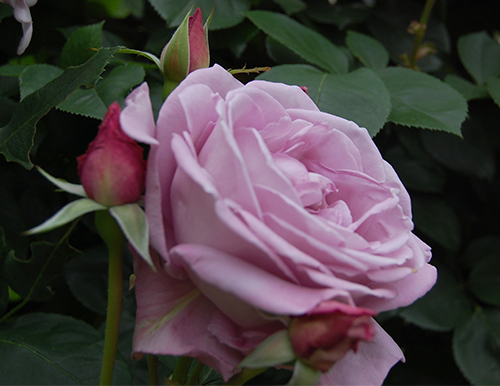
The frost resistance of Mainzer Fastnacht, according to the US Department of Agriculture (USDA), corresponds to zone 6 (minus 17 - 20 ° C). Resistance to powdery mildew and black spot is average.
Advantages of the variety: delicate color of flowers, unpretentiousness, delicious aroma, adaptability, flowers are good for cutting and stand in water for a long time.
Disadvantages: poor resistance to rain, the difficulty of combining with other plants in landscape compositions, in a damp summer the plant may suffer from powdery mildew.
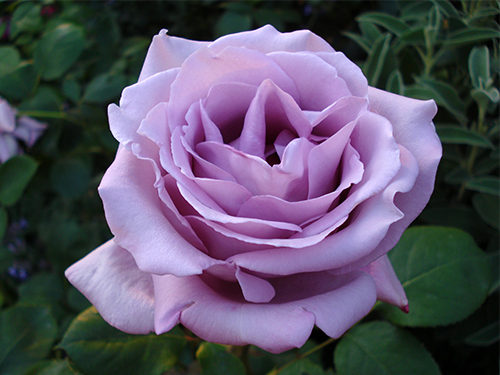
Mainzer Fastnacht is an unusually delicate rose, well suited for single planting and small rose garden. Due to the uniqueness of the color, this rose is difficult to combine with other varieties of various shades; neighbors need to be selected more carefully. Do not plant plants with bright, red or yellow flowers on it. It is beautifully complemented by cream or lilac-lilac shades that are inherent in varieties such as' Blue Parfum ',' Moody Blue ','Eyes for you',' Novalis ',' Rokoko ',' Marie Antoinette 'and'Rhapsody in blue'. You can also emphasize the delicate color with lighter shades of ‘Avalanche’ and ‘Pascali’ flowers. You can contrast this variety with lavender (Lavandula angustifolia), sage (Salvia officinalis), bellflower (Campanula carpatica) or 'Berleburg' and 'Rhapsody in Blue' roses. Experiment and combine roses of different shapes and colors, thereby successfully highlighting the characteristics of each plant.
Synonymous names: ‘Blue Moon’, ‘Blue Monday’, ‘Blue girl’, ‘Sissi’, ‘Meiser’, ‘Blue Moon’, ‘Blue Girl’, ‘Si Xi.
An improved variety has been developed from this hybrid tea rose ‘Twice in a blue moon'as well as the popular climbing rose'Blue Moon, Cl.'.
